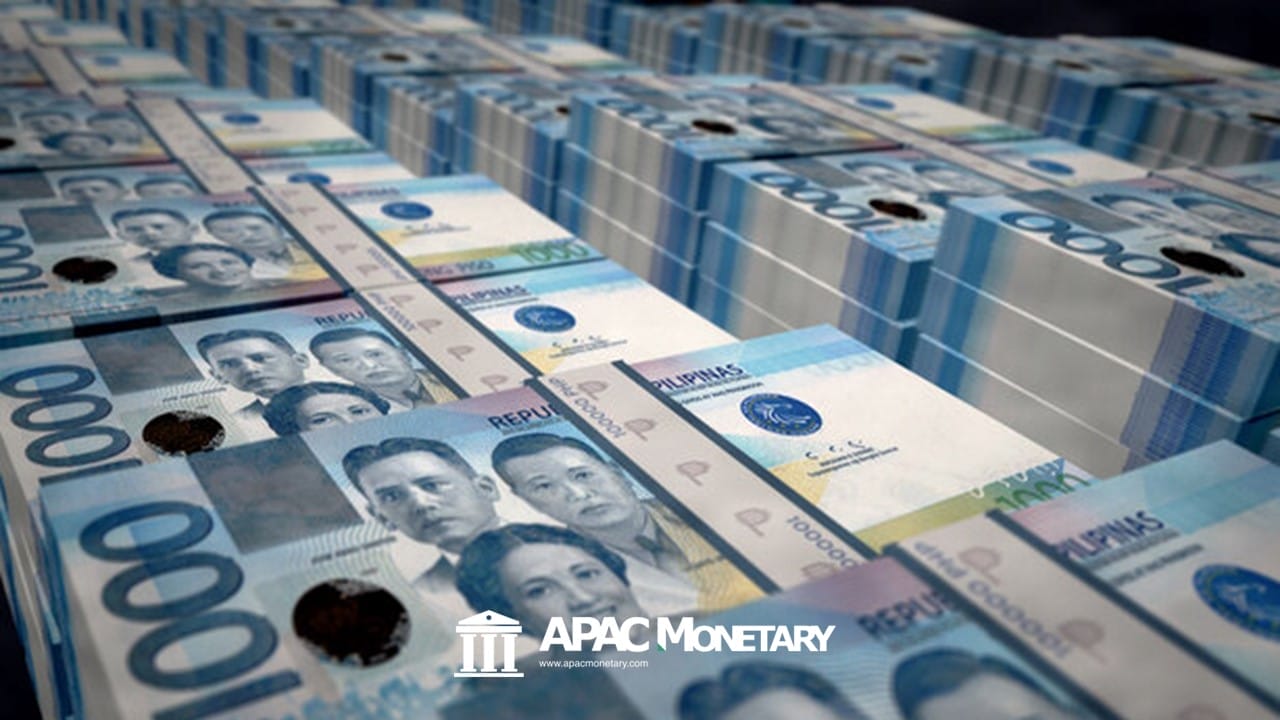Table of Contents
When it comes to saving money, many people think they know all there is to know about term deposit rates in the Philippines. After all, these fixed savings accounts promise security and steady returns, making them a popular choice for those looking to grow their wealth. But what if I told you that the world of term deposits in the Philippines holds some surprising truths that could change how you view this financial option?
In this article, we’ll explore six eye-opening facts about Philippine term deposit rates that go beyond the usual numbers and statistics. From hidden perks to unexpected challenges, understanding these aspects can help you make smarter financial decisions. Whether you’re a seasoned saver or just starting your journey, these insights might just surprise you and inspire new strategies for your savings!

What are Term Deposit Rates
Term deposit rates represent a fixed interest rate that banks offer for depositing funds over a specified period. Often seen as a low-risk investment, these rates can vary significantly between financial institutions and depend on the duration of the deposit—from 30 days to several years. Interestingly, the recent fluctuations in global economic conditions are influencing Philippine term deposit rates, making it crucial for investors to stay informed about their returns.
Many people overlook the potential benefits of shopping around for better-term deposit rates. While some may settle for the first offer they receive, conducting thorough research can yield substantially higher returns. Moreover, with rising inflation being a concern in today’s economy, locking in competitive term deposit rates becomes essential not just for capital preservation but also for achieving real growth on savings. As more financial institutions aim to attract savers with promotional offers and tiered interest structures, taking advantage of these opportunities could enhance your overall investment strategy significantly.

1. Current Trends in Term Deposit Rates
As of late 2023, the landscape of term deposit rates in the Philippines is experiencing dynamic shifts influenced by global economic pressures and local monetary policies. With inflation remaining a key concern, many banks are revising their offers to attract savers looking for stability. The current trend shows a gradual increase in term deposit rates as financial institutions compete to secure customer deposits amidst rising interest expectations. Savvy investors are now capitalizing on these higher rates, often turning to longer-term placements for enhanced returns while maintaining security.
Moreover, innovative products are emerging alongside traditional term deposits, appealing to a broader range of risk appetites among Filipinos. Financial institutions are experimenting with tiered-rate structures and promotional campaigns that provide additional perks for early birds or larger investments. This indicates a shift towards a more personalized banking experience where consumers can tailor their savings strategies based on individual financial goals and timelines. Keeping an eye on the evolving term deposit rates can unlock lucrative opportunities—banking savvy today could lead you toward significant earnings tomorrow!
2. Interest Rate Variability Explained
Interest rate variability is a fundamental concept that can influence your earning potential when investing in term deposits. In the Philippines, term deposit rates are inherently tied to both domestic monetary policy and global economic conditions. During times of economic growth, central banks may increase interest rates to curb inflation, which can lead to higher term deposit rates for savers. Conversely, during economic downturns, interest rates often decrease as policymakers aim to stimulate borrowing and spending; this affects the returns on existing term deposits.
Moreover, the competitive landscape among financial institutions further shapes these rates. Banks continuously adjust their term deposit offerings based on what others are providing—essentially a race to attract more capital while managing risk effectively. Savvy investors can leverage this variability by strategically timing their investments or taking advantage of promotional offers from various banks to secure better returns. Understanding these dynamics not only empowers you as a depositor but also allows you to navigate fluctuations in term deposit rates effectively, maximizing your savings over time.
3. Comparison with Other Investment Options
When evaluating term deposit rates, it’s essential to compare them with other investment options, such as stocks or mutual funds. While term deposits provide a secure and predictable return, typically ranging from 1% to 4% in the Philippines, equities can offer higher potential returns but come with increased volatility and risk. In a thriving stock market, an investor might achieve double-digit gains; however, this comes with the uncertainty of fluctuating prices and economic shifts that could impact your capital.
Moreover, unlike mutual funds that often charge management fees that can eat into your profits over time, term deposits usually come with minimal costs. This means you keep the majority of your earnings intact. For those prioritizing stability over high returns in uncertain economic times—perhaps due to personal circumstances like nearing retirement—opting for attractive term deposit rates might be more appealing than navigating the complexities of more volatile investments. Ultimately, understanding these differences can empower you to align your financial strategy with your risk tolerance and long-term goals effectively.
4. Common Misconceptions About Term Deposits
When delving into the world of term deposits, one common misconception is that all banks offer identical term deposit rates. In reality, rates can vary significantly from institution to institution based on their liquidity needs and competitive strategies. Consumers often overlook smaller banks or credit unions, which may provide more attractive rates compared to larger financial institutions. By diversifying your research and comparing multiple offerings, you can find a term deposit that maximizes your earnings potential.
Another prevalent myth is that funds in a term deposit are entirely inaccessible until maturity. While it’s true that these investments typically come with penalties for early withdrawals, many institutions now provide options for partial withdrawals without significant fees. This flexibility is especially useful during emergencies when immediate access to cash becomes necessary. Understanding these nuances can help investors make informed decisions and better utilize their funds within the context of both savings goals and financial needs.
5. The Role of Financial Institutions
Financial institutions are pivotal in shaping the landscape of term deposit rates in the Philippines, as they strive to strike a balance between attracting customers and managing their own liquidity. Banks often offer competitive term deposit rates to signal security and reliability to prospective depositors, enhancing consumer confidence in their savings options. Interestingly, these rates are influenced not only by internal economic factors but also by global financial trends, central bank policies, and local market competition. As the economy fluctuates, financial institutions may adjust their offerings to better align with current interest rate cycles.
Moreover, innovative digital platforms are now allowing banks to cater more specifically to customer needs. For instance, some leading banks provide personalized term deposit products with tiered interest rates based on the amount deposited or account tenure, appealing to both small savers and large investors alike. This targeted approach transforms how Filipinos perceive savings; instead of viewing deposits merely as vehicles for safekeeping money, they’re seen as tools for wealth-building through maximized returns.
Additionally, regulatory frameworks are essential in how financial institutions determine term deposit rates. By keeping abreast of monetary policies set forth by government authorities—such as adjustments in reserve requirements—banks can position themselves competitively while adhering to regulations that safeguard depositor interests. Thus, understanding how these dynamics work together helps savers make informed decisions about where and when to invest their funds for optimal growth.
6. Impact of Economic Factors on Rates
Economic factors play a critical role in shaping term deposit rates, often reacting swiftly to shifts in the market environment. For instance, central bank policies aimed at controlling inflation can lead to alterations in interest rates, which directly affect the yield on term deposits. When economic growth stirs, and inflation expectations rise, institutions may increase their deposit rates to ensure that investors’ returns keep pace with rising prices. This dynamic creates a compelling opportunity for savers to benefit from higher yields during times of economic expansion.
Conversely, during periods of economic uncertainty or recession, banks might lower their term deposit rates as they tighten financial conditions and seek to maintain liquidity. This situation reflects a broader strategy where institutions prioritize stability over attracting new deposits. Consequently, individuals looking to secure optimal returns need to stay informed about macroeconomic signals and monetary policy trends—understanding these factors could mean the difference between maximizing savings and settling for mediocre gains. As the economy fluctuates, so too will your approach to investing in more lucrative term deposit options tailored to evolving financial landscapes.
Strategies for Maximizing Your Returns
When aiming to maximize returns on your savings, understanding the nuances of Philippine term deposit rates can be a game changer. One key strategy is to shop around among various banks and financial institutions. Not all providers offer the same rates, and many times there are promotional offers that can significantly boost your earnings for a limited time. Additionally, considering longer-term deposits often yield higher interest rates, locking in funds for a year or more allows you to take advantage of compounding interests effectively.
Another insightful approach involves staggering your deposits—a technique known as laddering. By dividing your total investment across multiple term lengths, you not only benefit from potentially varying interest rates but also maintain liquidity as some funds become available sooner than others. This method keeps your money working for you while providing flexibility should unexpected needs arise. Finally, keeping an eye on economic trends and adjusting your strategies accordingly can help you seize opportunities in fluctuating interest rate environments, ensuring that every peso earns its maximum potential in the ever-evolving landscape of Philippine term deposit rates.
Future Outlook for Term Deposit Rates
As we look ahead, the future outlook for Philippine term deposit rates is poised for intriguing developments. With the global economic climate exhibiting signs of volatility, local banks may find themselves adjusting their strategies to attract more investors. This could lead to increased competition among financial institutions, ultimately benefiting savers by offering better rates and more flexible terms. Furthermore, as inflation pressures persist, it might prompt the Bangko Sentral ng Pilipinas (BSP) to fine-tune interest rates in a bid to maintain stability in the economy.
Investors should also consider how shifts in remittances and consumer spending behavior could influence Philippine term deposit rates. If the economy continues its upward trajectory post-pandemic, there may be a gradual increase in demand for deposits as individuals look to secure their savings amidst uncertain times. Simultaneously, advancements in fintech could pave the way for innovative deposit products that offer competitive yields while allowing greater accessibility and ease of management. Keeping an eye on these trends will equip depositors with vital insights into maximizing their returns on investments over the coming years.
Conclusion: Surprising Truths About Philippine Term Deposit Rates
In conclusion, it’s crucial to recognize that Philippine term deposit rates often fluctuate in tandem with the economic landscape and central bank policies. This means that savvy investors can actually leverage changes in these rates to their advantage by timing their deposits strategically. For instance, periods of economic uncertainty may lead banks to offer higher rates to attract more deposits, presenting an opportunity for those willing to act swiftly.
Moreover, while many view these deposits primarily as a safe haven for investment, they also serve as a powerful tool for financial planning and wealth accumulation over time. By exploring less conventional banks or credit unions, you may uncover surprisingly competitive rates that traditional institutions don’t provide. Ultimately, understanding the dynamic nature of Philippine term deposit rates can empower individuals not just to preserve their capital but also to enhance their overall financial portfolio in creative and effective ways.











